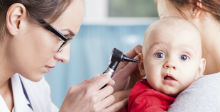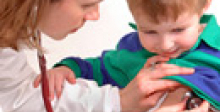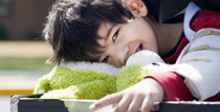Internal mini form
Contact Us Today
Acupuncture is a form of complementary medicine invented in China that is intended to treat disease and relieve pain. The most common use of acupuncture is for pain relief from headaches, back pain, joint pain and neck pain. Although acupuncture has not been fully embraced by the medical community in the United States, it is widely considered to be a healing art as opposed to a medical treatment.
Acupuncture: A historical perspective
Acupuncture is a form of complementary medicine invented in China that is intended to treat disease and relieve pain. To some, acupuncture is a form of pain relief sought as an alternative to over-the-counter medicines, like acetaminophen or nonsteroidal anti-inflammatory drugs. The most common use of acupuncture is for pain relief from headaches, back pain, joint pain and neck pain.
Although acupuncture has not been fully embraced by the medical community in the United States, it is widely considered to be a healing art as opposed to a medical treatment.
For children and adults with Cerebral Palsy, acupuncture is a relatively new therapy. Studies are being conducted for various symptoms experienced by those with Cerebral Palsy, for example it is being studied for chronic pain relief, brain injury repair, and hypertonicity.
Although there are few studies regarding acupuncture’s impact on Cerebral Palsy, at least one formal investigation undertaken in the United States by the National Institutes of Health, a division of the U.S. Department of Health and Human Services, in conjunction with the University of Arizona, indicated that it can help reduce muscle hypertonicity in children. This, in turn, relieves muscle tension, pain and discomfort.
Likewise, China has issued a statement of clinical observation that shows promise of accelerating the recovery of injured brain nerves and reconstructing brain function of children diagnosed with Cerebral Palsy.
Although the efficacy of acupuncture as a treatment for chronic pain experienced by individuals with Cerebral Palsy remains to be further proven in research, there are some studies that show promise in terms of relieving pain for other conditions, such as carpal tunnel syndrome, chronic pain, headaches, low-back pain, myofascial pain, osteoarthritis and postoperative dental pain.
There are several schools of thought regarding why the practice of acupuncture developed, but there is no record regarding why acupuncture was used, or how it developed and evolved.
In modern times, acupuncture began to gain notice and acceptance in the United States in the 1970s, when alternative and complementary therapies and treatments were sought by many Americans.
What is acupuncture?
In its most traditional form, acupuncture is performed by penetrating the skin at certain points of the body with thin, small needles. Chinese medicine indicates that by penetrating certain points of the body, it affects the flow of qi, or life force, through the body’s channels, referred to as meridians.
The premise of acupuncture is based on a theory that all the body’s functions are dictated by the qi, and if there are disruptions to the energy’s flow, it can cause pain. By placing the needles in anatomical points, the flow is opened, restored or enhanced.
The qi includes five cardinal functions:
- Actuation, or the processes of the body that encourage circulation
- Warming, or the body’s limbs
- Containment, or body fluids
- Defense, against pathogenic or spiritual invaders
- Transformation, or food, drink and breathing to increase flow into the body’s channels
The body’s 12 meridians are located throughout the body; eight are considered “extraordinary,” or essential to the qi’s existence. Meridians also represent the locations that are considered points for needle insertion during therapy.
However, the qi has no known physiological counterpart; and modern practitioners typically focus on pressure points on the head, neck, legs and hands. It is not known how many pressure points – or clusters of nerves or sensitive spots – a human has, though practitioners believe that it is in the hundreds.
Acupuncture is considered minimally invasive; the needles, tiny in circumference, are never inserted deeply into skin.
Some of the conditions acupuncture practitioners say can be helped through the therapy include:
- Muscle pain and tightness
- Anxiety
- Sleep disturbances
- Depression
- Cancer
- Drug dependence
- Fibromyalgia
- Arthritis
- Bell’s palsy
- Autism
How is acupuncture performed?
An appointment with an acupuncturist will begin with an assessment. The acupuncturist will ask about symptoms and medical history to determine if acupuncture is a viable therapy.
Then, a physical exam will commence to help the acupuncturist determine what pressure points should be targeted. This evaluation will include:
- Face
- Tongue
- Heart rate
- Breathing capabilities
- Pulse
Once all of the information is collected, a goal is established. The acupuncturist will insert small, thin needles into the pressure points that are being targeted. Needles are often inserted using a plastic tube; many are manipulated through up and down movements, or twists. Because the needles are very thin and very sharp, pain is likely to be minimal.
Following are specialized procedures that may be performed during an acupuncture session:
- Acupressure, or placing physical pressure by hand to pressure points
- Moxibustion, or the burning of a cone or cylinder near an acupuncture site to warm the skin
- Electropuncture, or using electrically-charged needles to stimulate the acupuncture site
- Sonopuncture, or stimulating pressure points using sound, not needles
What are the benefits of acupuncture for children with Cerebral Palsy?
Part of having Cerebral Palsy means finding new ways to cope with various physical symptoms, some of which acupuncture is believed to remedy.
The most comprehensive study of acupuncture and children was funded by the National Institutes of Health and performed by the University of Arizona Pediatrics Department. The study involved several children; its goal was to determine to what extent muscle hypertonicity could be eliminated.
One child in the study had severely tight muscles that were impeding the development of his internal organs. The 5-year-old had limited vocal ability, and his affect was more or less flat. He underwent acupuncture at seven channels on his lower and upper extremities; the treatment lasted a few hours. Researchers noted a decrease in hypertonicity that was short in duration.
After a second treatment, the child began crying at the insertion of the needles, and researchers removed the needles.
Auricular treatment without needles was implemented, and it was noted that his muscles were not as hard as they were before treatment. In this treatment, the points were stimulated by an ear probe. By the end of 16 treatments with the ear probe, the child’s limb thrusting was reduced by 50 percent.
Another randomized controlled trial at the University of Arizona Health Sciences Center indicated that acupuncture may provide relief to children with spastic Cerebral Palsy. The evaluation-blind trial assessed children ages 12 to 72 months with spasticity.
After 16 weeks of acupuncture treatment, one group of children displayed improvement in their gross motor functionality that exceeded researcher’s expectations. The conclusion of the study is that acupuncture can, if done properly and early, help children improve their ability to function physically, but further study is needed.
One area of promise is in the area of laser acupuncture, which targets points by using low-energy, pulsating laser beams instead of traditional needles.
The beam radiates against the skin and stimulates the point in a way that a needle would. A study performed on 29 children in China with brain damage, when they received laser acupuncture on various scalp points, experienced improvements in cerebral blood flow, which can enhance physical function.
Where is acupuncture performed?
Acupuncture is generally performed at specialized clinics and wellness centers that offer the therapy, along with other alternative treatments. Since acupuncture has not been fully embraced as a medical treatment by physicians in the United States, it is not likely performed in the medical office. However, all forms of treatments should be disclosed to your primary care physician so that coordination of care is properly carried out.
How effective is acupuncture?
Acupuncture has gained a dedicated following of devotees in both the United States and abroad; however, its effectiveness in remedying diseases and relieving symptoms is still a matter of considerable controversy 40 years later.
One theory that has been advanced by the medical establishment is that acupuncture’s effect on the human body is placebo in nature; that the relief of chronic pain and illness was purely imagined. But several medical reviews have found that patients have experienced relief from their symptoms by undergoing the procedure, including those brought on by serious illnesses including arthritis, migraines or headaches. Other investigations have indicated that acupuncture can be a harbinger for improved fertility.
Another theory surmises that acupuncture releases endorphins, which provide temporary relief to physical symptoms such as pain.
In terms of children and people with Cerebral Palsy, the NIH and the University of Arizona conducted a study that showed acupuncture reduced muscle hypertoncity in children.
What, if any, risks does acupuncture carry?
The effectiveness of acupuncture has been hotly debated. Although there is limited research on the safety of mind and body practices for children, according to the National Center for Complementary and Alternative Medicine, or NCCAM, they do state, “Acupuncture appears to be safe for most children when performed by appropriately trained practitioners, but a 2011 research review concluded that unwanted side effects can occur when acupuncture is done by poorly trained practitioners.” They also suggest acupuncture is safe when performed correctly.
Since acupuncture requires the insertion of needles into a person’s skin, it cannot be considered risk-free.
Generally, these are the risks associated with acupuncture:
- Infection
- Transmission of diseases
- Bleeding
- Hematoma
- Dizziness
- Pain
- Site injury
In the United States, needles are required to be used only once, which greatly reduces the risk of infection and the transmission of blood-borne diseases. Also, there is the possibility of site injury if a needle is inserted into the skin too deeply; this could result in brain or head injuries, damage to organs or blood vessels. Injuries, however, occur infrequently if acupuncture is being conducted by a fully-licensed and qualified professional.
NCCAM recommends disclosing a full picture of what you do to manage your health to your primary care physician to help ensure coordinated and safe are. “It’s important that parents talk with their child’s health care provider about any complementary health approach that is being used or considered, and parents should encourage their teenagers to do the same. For tips about talking with health care providers about complementary health products and practices, see NCCAM’s Time to Talk campaign.”
What qualifications must acupuncture practitioners meet?
Acupuncturists in the United States must meet stringent educational requirements to be able to practice in the 50 states. All candidates must complete a three- or four-year graduate level university program that is accredited by ACAOM, or the Accreditation Commission for Acupuncture or Oriental Medicine. Additionally, most states require practitioners to pursue certification by the National Certification Commission for Acupuncture and Oriental Medicine, or NCCAOM.
NCCAOM has implemented different requirements for different certifications. Pre-graduation certification generally requires 1,490 hours of instruction before a candidate can sit for an examination. The ACAOM also requires 870 hours of instruction in its Oriental Medicine Program to practice. All licensed acupuncturists must re-certify by obtaining 60 more hours of training every two years.
For more information on acupuncture
- Acupuncture for Pain – NCCAM
- Acupuncture: An Introduction – NCCAM
- Understadning Acupuncture – National Institute of Health
- National Certification Commission for Acupuncture and Oriental Medicine
For some relevant studies on acupuncture:
- Acupuncture as complementary therapy for Cerebral Palsy, University of Arizona and HIH
- Evaluating intense rehabilitative therapies with and without acupuncture for children with Cerebral Palsy: A randomized controlled trial
- Clinical observation on infantile Cerebral Palsy treated with quick meridian needling therapy plus scalp acupuncture
- Acupuncture use in the United States: findings from the National Health Interview Survey
- Complementary and alternative medicine use among adults and children: United States, 2007
- The impact of patient expectations on outcomes in four randomized controlled trials of acupuncture in patients with chronic pain
New study shows promise
A new study published by the Cerebral Palsy Rehabilitation Center of Nanhai Maternity and Children Hospital in Guangdong Province, China suggests that using acupuncture to clear the Governor Vessel and to refresh the mind needling can accelerate the recovery of injured brain nerves and the reconstruction of brain function when combined with conventional rehabilitative training in children with Cerebral Palsy. Researchers evenly and randomly assigned treatment and control group status to 200 children with Cerebral Palsy. The effective rate in the treatment group was 87 percent, compared to 55 percent, confirmed by Gesell Developmental Scale tests and skull CT/MRI testing. To obtain the study, visit Clinical Observation on Infantile Cerebral Palsy.

Therapy for Cerebral Palsy
A person’s ability to transcend his or her physical limits is in no small part due to the kinds of therapies that are used to fine-tune his or her abilities. Therapy fosters functionality, mobility, fitness, and independence. The types of therapies vary based on a person’s unique needs, type of Cerebral Palsy, extent of impairment and associative conditions. Therapy can also help parents and caregivers.
Therapy for Cerebral Palsy includes
- Acupuncture
- Aqua Therapy
- Behavioral Therapy
- Chiropractic Intervention
- Conductive Education
- Hippotherapy
- Intensive Suit Therapy
- Massage Therapy
- Music Therapy
- Nutrition and Diet Plan Counseling
- Occupational Therapy
- Physical Therapy and Physiotherapy
- Play Therapy
- Recreation Therapy
- Respiratory Therapy
- Sensory Integration Therapy
- Social Therapy
- Speech and Language Therapy
- Vocational Counseling








